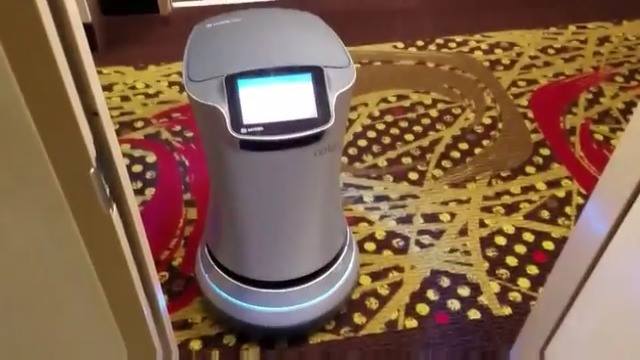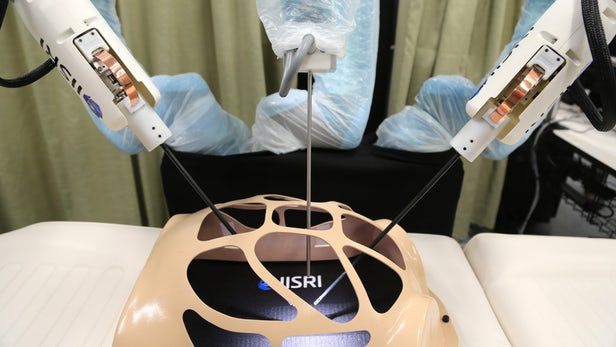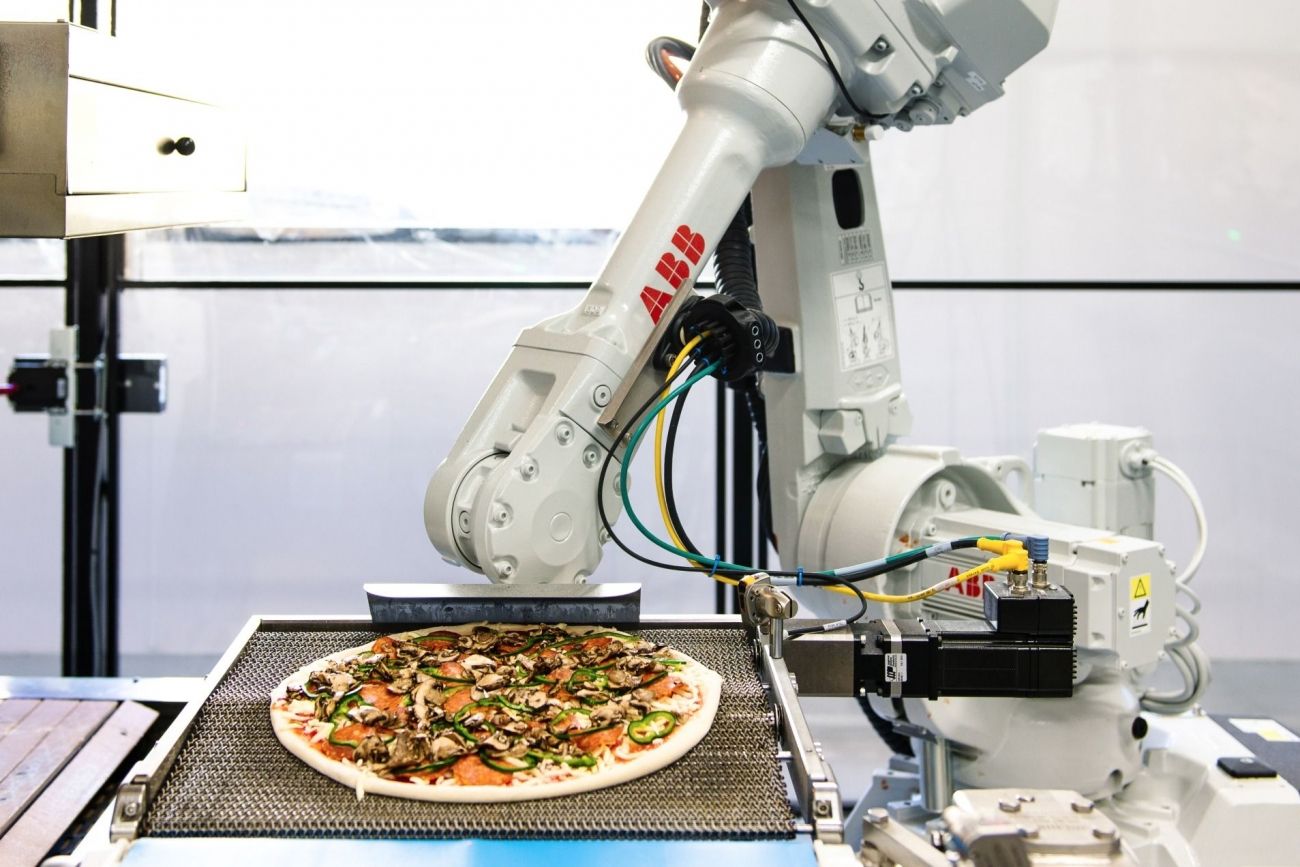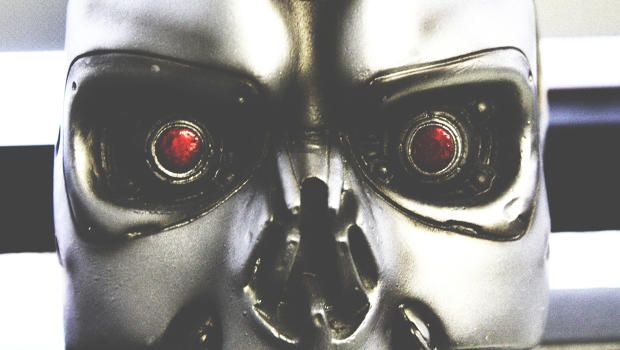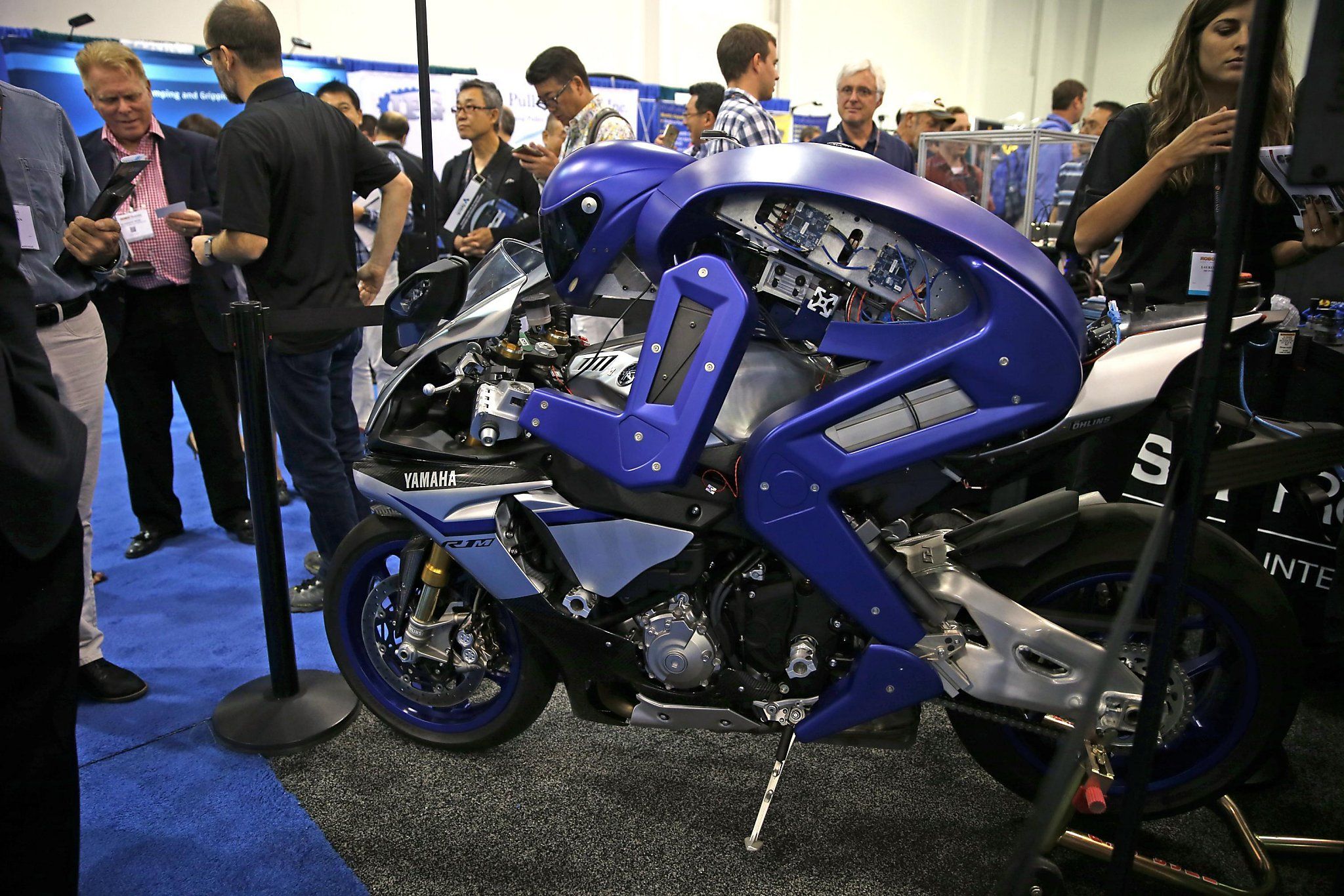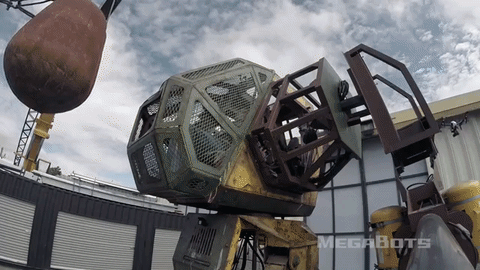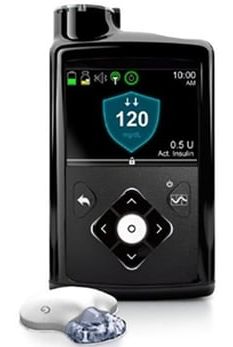Archive for the ‘robotics/AI’ category: Page 2217
Sep 30, 2016
Robotic surgery tech provides users with a sense of touch
Posted by Shane Hinshaw in categories: biotech/medical, robotics/AI
A new system called HeroSurg, developed by researchers at Deakin and Harvard Universities, is set to increase what surgeons can achieve via robotic surgery, using a haptic feedback system to provide a sense of touch. It also brings other improvements over existing tech, such as collision avoidance, to make robotic surgery safer and more accurate.
Robotic surgery, wherein human-controlled robots perform delicate surgical tasks, has been around for a while. One great example of the tech is the da Vinci robotic surgical system from Intuitive Surgical – a setup made up of numerous robotic arms, a console to operate the instruments, and an imaging system that shows the surgeon what’s happening in real time. In 2008, Professor Suren Krishnan, a member of the team behind HeroSurg, became the first surgeon to perform ear, throat and nose operations using the da Vinci robotic surgical system.
Since then, we’ve seen numerous breakthroughs, including improvements to the original da Vinci system, and other robots emerging capable of achieving impressive tasks, such as performing surgery on a beating heart, or successfully stitching soft tissue.
Sep 30, 2016
This Startup Employs Robots That Bake Pizza En Route for Delivery
Posted by Shailesh Prasad in category: robotics/AI
Sep 30, 2016
If There’s Life on Europa, Robots Like These Will Find It
Posted by Klaus Baldauf in categories: robotics/AI, space travel

The exploration of Europa begins under the ice in Antarctica.
That’s where a team of researchers, led by the Georgia Institute of Technology (Georgia Tech), has been testing a variety of robotic subs in recent years to learn about what technologies will work best when NASA eventually launches a mission to Jupiter’s icy moon.
Continue reading “If There’s Life on Europa, Robots Like These Will Find It” »
Sep 30, 2016
Tech Giants Team Up To Devise An Ethics Of Artificial Intelligence
Posted by Elmar Arunov in categories: ethics, robotics/AI
Amazon, Facebook, Google DeepMind, IBM, and Microsoft announced the Partnership on AI, which will research ways to use the tech responsibly.
Sep 29, 2016
IBM Neuromorphic chip hits DARPA milestone and has been used to implement deep learning
Posted by Karen Hurst in categories: information science, robotics/AI, supercomputing
IBM delivered on the DARPA SyNAPSE project with a one million neuron brain-inspired processor. The chip consumes merely 70 milliwatts, and is capable of 46 billion synaptic operations per second, per watt–literally a synaptic supercomputer in your palm.
Along the way—progressing through Phase 0, Phase 1, Phase 2, and Phase 3—we have journeyed from neuroscience to supercomputing, to a new computer architecture, to a new programming language, to algorithms, applications, and now to a new chip—TrueNorth.
Fabricated in Samsung’s 28nm process, with 5.4 billion transistors, TrueNorth is IBM’s largest chip to date in transistor count. While simulating complex recurrent neural networks, TrueNorth consumes less than 100mW of power and has a power density of 20mW / cm2.
Sep 29, 2016
IARPA To Develop Early-Warning System For Cyberattacks
Posted by Karen Hurst in categories: business, cybercrime/malcode, government, robotics/AI
The Intelligence Advanced Research Projects Activity has launched a multi-year research and development effort to create new technologies that could provide an early warning system for detecting precursors to cyberattacks. If successful, the government effort could help businesses and other targets move beyond the reactive approach to contending with a massive and growing problem.
IARPA, part of the Office of the Director of National Intelligence, says the three-and-a-half year program will develop software code to sense unconventional indicators of cyber attack, and use the data to develop models and machine learning systems that can create probabilistic warnings.
Current early warning systems are focused on traditional cyber indicators such as activity targeted toward IP addresses and domain names, according to IARPA program manager Robert Rahmer. The first stage, lasting 18 months, will examine data outside of the victim network, such as black market sales of exploits that take advantage of particular software bugs. The second and third phases, 12 months each, will examine internal target organization data and look for ways to develop warnings and transfer any tools that emerge from the research from one organization to another, he said.
Continue reading “IARPA To Develop Early-Warning System For Cyberattacks” »
Sep 29, 2016
The future of robots: singing lullabies, testing motorcycles
Posted by Zoltan Istvan in categories: business, drones, geopolitics, robotics/AI, transhumanism
Cool new story in the San Francisco Chronicle about the robotics conference. I gave a speech at it yesterday.
At the two-day RoboBusiness Conference, about 2,000 people were serenaded with lullabies and Disney tunes, including “Let It Go” from the hit film “Frozen,” by a human-like robot designed to comfort senior citizens and autistic children.
And next to a man-size robot that can drive a motorcycle 190 mph around a race track, a half-dozen ant-size robots quickly scurried about a miniature factory floor.
Continue reading “The future of robots: singing lullabies, testing motorcycles” »
Sep 29, 2016
The first episode of the MegaBots webseries takes a wrecking ball to its six-ton robot
Posted by Shane Hinshaw in categories: entertainment, robotics/AI
Seems like we’ve been waiting forever for the big showdown between Team USA and Japan. We’re seemingly no closer at the moment, but at least the team at MegaBots can offer a bit of good old-fashioned destruction to tide us over before the massive machines go toe-to-toe.
In the premier of its new web series (the trailer for which was shown off at Disrupt the other week), the team behind the fighting robot startup league go to town on their own robot, the $200,000 Mk. II.
In order to stress test the six-ton bot’s protective casing, the team shoots it with its own gun and gives it several whacks with a wrecking ball. At the risk of spoiling the seven-and-a-half minute long video, it turns out it’s really tough to knock over a 15-foot-tall fighting robot.
Sep 29, 2016
FDA clears first-ever artificial pancreas for automated insulin delivery
Posted by Shane Hinshaw in categories: biotech/medical, robotics/AI
Monitoring blood-glucose levels and injecting insulin to keep them in a safe range is a never-ending headache for sufferers of type 1 diabetes. A number of research projects have made promising steps recently to promise easier ways of doing things, and now this type of convenience is set to move out of the lab and into the real-world. For the first time, the US Food and Drug Administration (FDA) has approved a so-called artificial pancreas designed to both monitor and inject insulin automatically, requiring minimal input from the user.
In a healthy person, beta cells in the pancreas secrete vital insulin, which in turn regulates blood-sugar levels. But for sufferers of type 1 diabetes, this process breaks down along the way, requiring them to administer finger-prick blood tests to keep tabs on their insulin levels and inject the hormone as required.
For years, scientists have been exploring better ways to keep the condition in check. These have included implanting beta cells, tracking glucose levels through contact lenses and ways insulin can be delivered via a capsule rather than a needle. But perhaps the most attractive solution is what is known as a closed-loop system, which seeks to automate both monitoring and administration of insulin to dramatically reduce the burden on the user.
